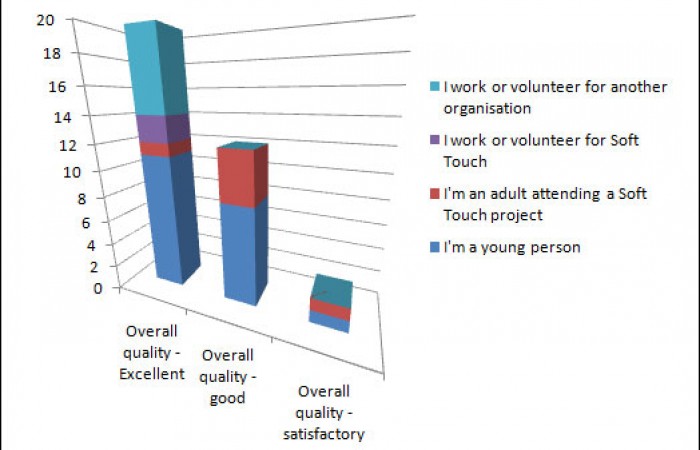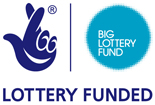Some of the elements we are measuring include:
* how often young people engage with our art activities
* how many of our participants contribute to the cultural life of the city
* how much of our provision is aimed at people from the most vulnerable groups
One of the questions we have been asking is: Do our stakeholders agree with us that we are providing excellent arts experiences? In order to answer this, we are doing regular surveys, asking our participants, project partners, and staff how they rate the quality of experience that we provide and how they rate our creative activities. The first survey was conducted in June 2012.
These reports are available on our website, and indicate that we have been regularly engaging about a third of our participants, and that our stakeholders consistently tell us we are providing ‘good’ and ‘excellent’ quality of experience. In our first stakeholder survey in June 2012, we achieved a level of over 96% good and excellent for the overall quality of the experience we provide, and over 91% good and excellent for the quality of the creative activities we provide. In our second stakeholder survey in September 2012, we achieved a level of over 94.1% good and excellent for the overall quality of the experience we provide, and over 97.1% good and excellent for the quality of the creative activities we provide.
“I have learnt some new skills and gained new experiences.” – Young participant
“The staff are professional, approachable and highly skilled. They work well in partnership with existing youth provision. Brilliant!” – Project partner
“I like it here!” – Young participant
The statistics about our KPIs are taken from the records of our projects and events. From April to June 2012, we worked with 348 individuals, including 117 participants who attended 3 or more times (regularly engaged). From July to September 2012, we worked with 387 individuals, including 110 participants who were regularly engaged.













